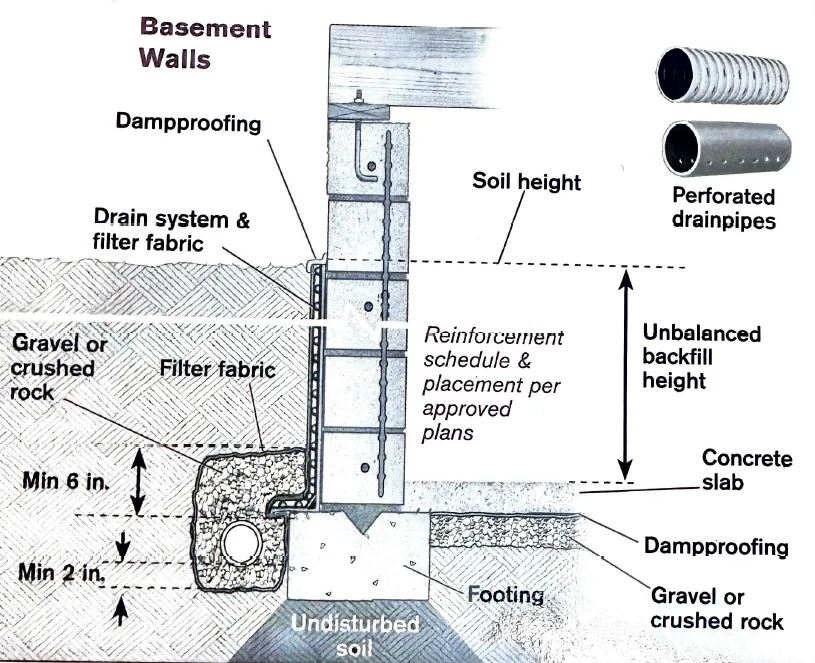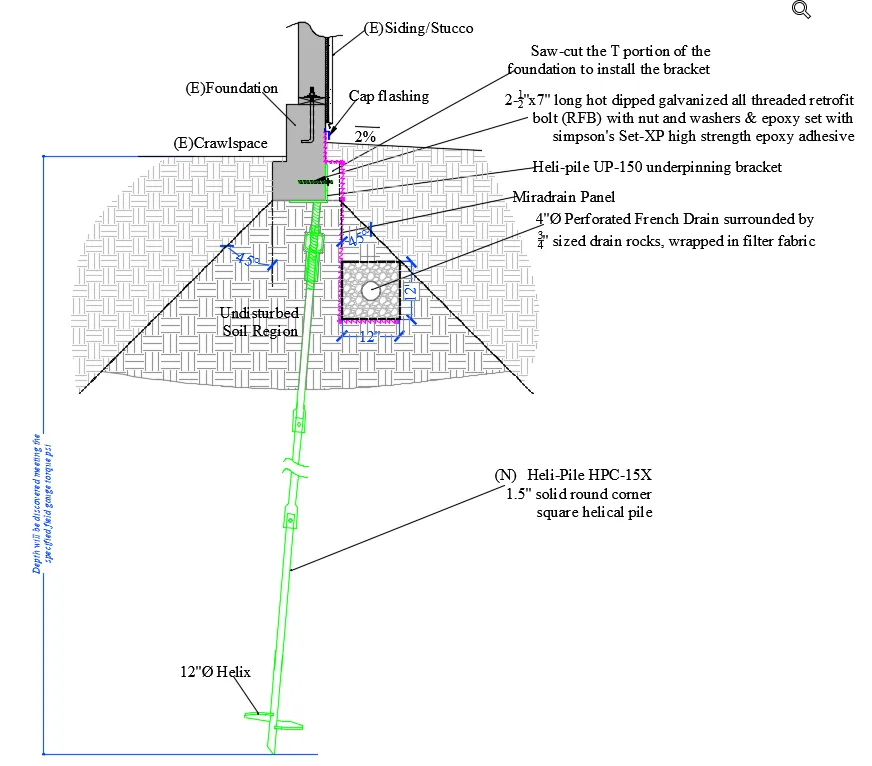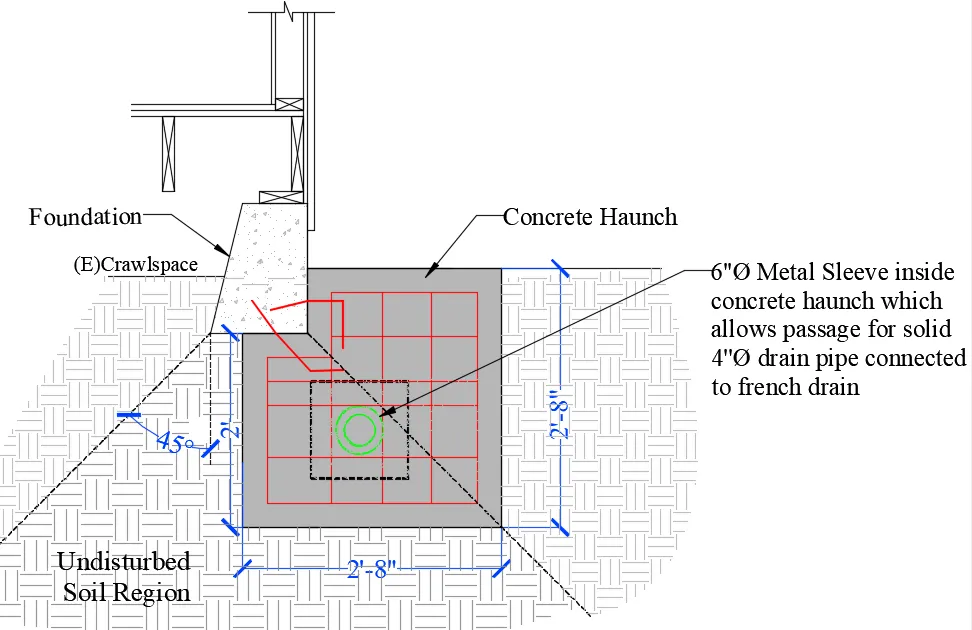
Proper Ways to Install French Drainage
What does the Code says about French Drainage Installation?

Per International Code Council the French drainage should be installed next to the bottom of existing foundation. The code also illustrates that there is a region underneath the foundation where the soil shouldn't be disturbed otherwise its going to create settlement issues to the house.
What if you have to go deeper than the code says?
CASE I : Installing French Drainage Outside the Undisturbed Soil Region under the Foundation
As illustrated on the Right hand side picture, if we needed to go deeper for French drainage installation, we can do so by installing the drainage in the location outside the undisturbed soil region, this helps to leave the foundation intact and without the risk of having foundation settlement.

CASE II : Supporting existing foundation with helical pile and installing drainage
If there is not enough yard next to the foundation to install deeper French drainage outside the undisturbed soil region then we could install French drain by first supporting the house foundation with helical piles then install the French drain. The helical piles helps to transfer the load of the house to a competent strata thereby minimizing the risk of house settlement.

CASE III : Supporting existing foundation with concrete haunch and installing drainage
If there is not enough yard next to the foundation to install deeper French drainage outside the undisturbed soil region then we could do so by first supporting the house foundation with concrete haunches then install the French drain. The concrete haunches helps to transfer the load of the house to a new stronger footing and thus minimizing the risk of house settlement. The drainage should pass through the concrete haunch with-in a cast in sleeve. The portion of pipe inside the haunch should be a solid pipe connected to perforated pipe in the areas between the concrete haunches.


Case IV: Scenario of Basement next to a perimeter foundation
If there is a basement next to a existing perimeter foundation and we have to install drainage, then we can first properly support the house perimeter foundation with helical piles then install French drainage, this helps to take care of the moisture problem of the basement by minimizing the risk of perimeter foundation settlement problem.

Here at Montclair Construction we have done numerous projects as mentioned in the above scenarios. Please give us a call and we can help to eradicate the moisture problem in you crawlspace and basement!
